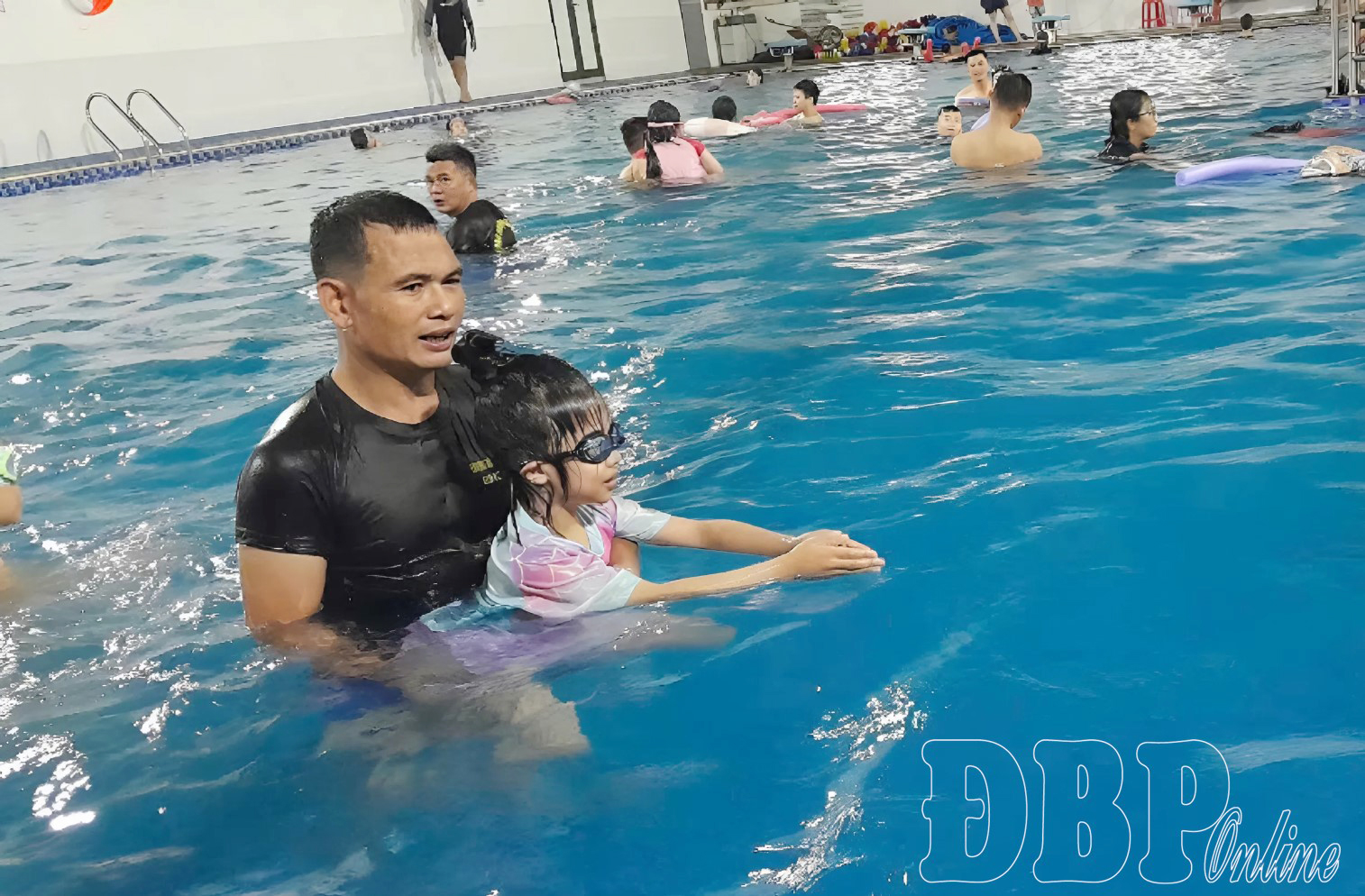Residents of Chà Nưa commune in Nậm Pồ district, Điện Biên province still grieve over the tragic drowning incident that occurred at noon on October 18, 2024, in the Nậm Bai stream near Nà Sự village. The accident claimed the lives of two 7-year-old students, L.T.L.S and L.D.B, from Chà Nưa Semi-Boarding Primary School for Ethnic Minorities.
Reportedly, the tragedy occurred after the children had been picked up from school and went to bathe in the Nậm Bai stream. Around 1 p.m., when they had not returned home, their families went looking and were devastated to find their bodies in the stream, roughly 100 meters from the village. Despite being rushed to the local health clinic, both children could not be saved.
.jpg)
In 2024, Điện Biên province recorded 45 child deaths from accidents and injuries, with 29 of them, over 64%, due to drowning.
There are several reasons behind the spike in child drownings during the flood season, most stemming from carelessness and lack of preventive skills. Children in rural and highland areas often live near bodies of water such as ponds, rivers, and reservoirs. These familiar settings, while part of daily life, are often underestimated in terms of risk. The absence of adult supervision, especially in households where parents work far from home, greatly increases the likelihood of danger.
Another key factor is the lack of basic life knowledge and survival skills among children. Many have never learned to swim or been taught how to escape water-related emergencies. They are also rarely warned about the dangers of deep or fast-moving water. Meanwhile, the rainy season significantly raises water levels and flow rates in rivers and streams, increasing the risk of drowning. Furthermore, fencing and warning signs at hazardous sites remain inadequate or completely absent.
Faced with this alarming reality, local authorities in Điện Biên have taken action to enhance child drowning prevention. Most notably, on February 20, 2025, the provincial People’s Committee issued plan No.459/KH-UBND to implement the “Safe swimming and child drowning prevention program through 2030”. The initiative aims to teach all children aged six and older to swim safely, ensure every locality has at least one certified swimming facility, build a professionally trained team of swimming instructors, and foster close collaboration among schools, mass organizations, and communities to effectively roll out the program.
.jpeg)
Efforts have also been stepped up to promote awareness and provide life skills training. For instance, Lương Thế Vinh High School recently held a safety and basic lifesaving skills workshop before the 2025 summer break, drawing large student participation. Students learned to recognize dangerous situations and how to respond to drowning incidents. They were also trained in first aid techniques such as CPR, rescue breathing, and wound dressing. The session included hands-on group practice with real-life scenarios guided by instructors.
Many students, encountering these life-saving skills for the first time, expressed excitement and a desire to learn more.
Diệp Anh Tuấn, a student at Lương Thế Vinh High School, shared: “After this session, I better understand how important drowning prevention skills are. I used to think just knowing how to swim was enough, but now I’ve learned what to do during a cramp, how to safely help someone who’s drowning, and how to protect myself in emergencies. It was incredibly helpful, and I hope more students get to attend such training to raise awareness and keep themselves safe.”
For drowning prevention efforts to be sustainable and effective, society as a whole must get involved. Families play a central role in supervising and teaching children water safety. Schools should integrate life skills education into the curriculum and offer widespread swimming lessons. Local authorities must regularly inspect, flag, and fix danger zones such as rivers, reservoirs, and flood-prone areas, especially during the rainy season. Installing fences and warning signs in high-risk zones is absolutely essential.

Youth organizations and the education sector should work together to organize free swimming lessons and emergency response training for children, especially during summer when outdoor activity increases and accidents become more likely.
According to Phạm Đức Phước, a swimming coach at the Điện Biên Swimming Center, teaching children to swim is only part of the solution. Equally important is training them how to respond to real-life emergencies. “Without the proper skills, even someone who can swim might drown while trying to rescue another person”, he said. “That’s why every swimming class should combine theory and practice, so children truly understand how to react in emergencies.”
As the rainy season peaks, children must be protected through meaningful care, essential skills, and comprehensive community support. We cannot afford to lose another innocent life to a moment of negligence, a missing warning sign, or the lack of a basic survival skill.
Drowning prevention is not just a task, it’s a shared responsibility, and a moral duty for every adult.




.jpg)
.jpg)

.jpg)
.jpg)


.jpg)
.jpg)

.jpg)




.jpg)

You have 500/500 characters left
Please enter 5 or more characters!!!